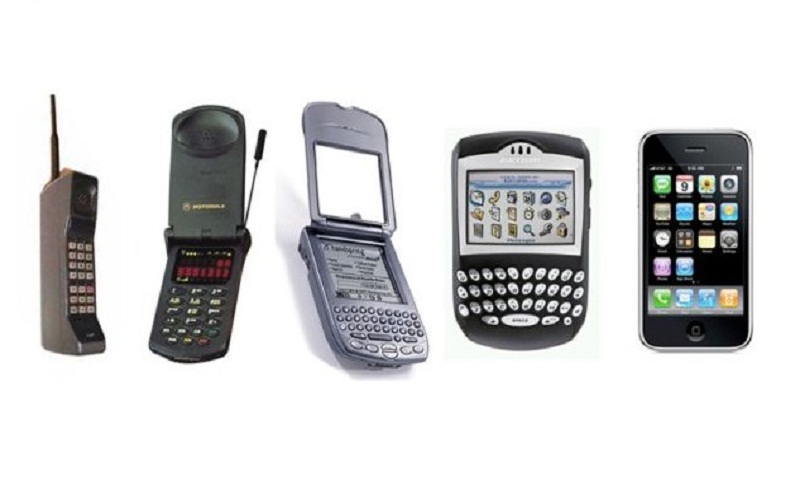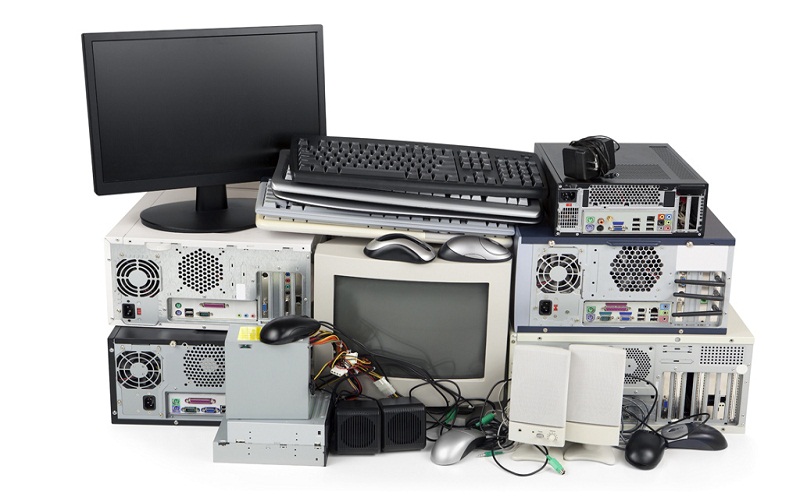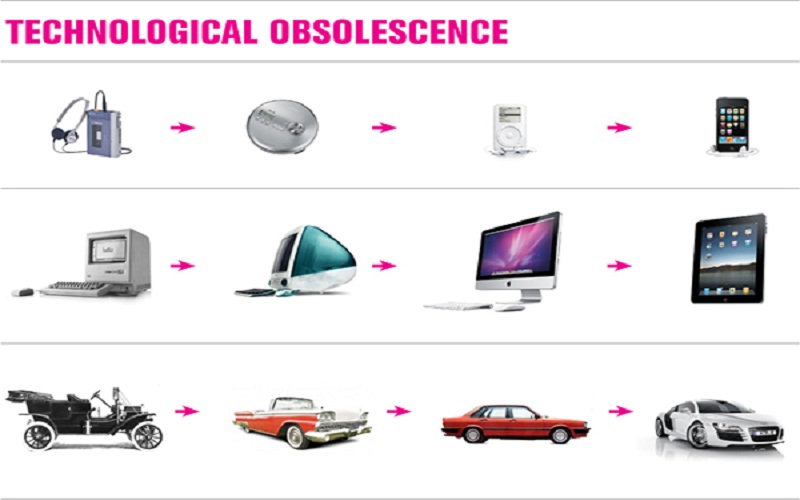Technological obsolescence-Being up to date in technology seems impossible mission! The great advances in ICT innovation make it necessary to know the latest versions of systems, software or programs in order to take advantage of all the functionalities of the devices. However, the pace at which new updates appear is moving too fast.
How affects? For example, if we buy a state-of-the-art device only a few months ago but have not made the necessary updates and revisions, it will become obsolete very soon. How to get ICT systems and devices up to date in your company? Betting on companies that offer technological consulting services, that are in charge of directly managing the technological obsolescence of your business.
What is technological obsolescence?

Speaking of technological obsolescence refers to the need to change or update a technological device or system, because a new version of it or a faster and more efficient system appears.
Being up-to-date in technology means adapting to the demands of the sector, being competitive and more reliable. If your customers observe that you are up to date, your commitment and confidence will increase.
How to find an expert in technological obsolescence management?
If you are looking for an expert company in the management of technological obsolescence for your business, find out why to bet on CiSGA .
It is a company that brings value, experience and consolidated procedures, recognized with the ISO 20,000 certification. The best? It has a team of high quality professionals, always up to date on the latest technology and offering a close customer service.
How do they manage technological obsolescence? In CiSGA they carry out an evolution and management of technological obsolescence, always linked with the strategy of your business. To do this, they identify the technological scenario of each client, making a diagnosis of the global state, both in updates and in security or legality and offering customized solutions to adapt to the latest ICT advances, taking advantage of existing environments.
This technology obsolescence management methodology allows to take full advantage of the ICT of each company, reducing costs and gaining efficiency. Keep reading If your Internet connection is bad, try to build a 4G antenna home
Risks of obsolete technology

When we refer to technological obsolescence, we refer to information technologies that were left out of support, out of maintenance, out of use. Of these types of technologies there are many at the business level.
Among the most highlighted risks
- Difficulty to support the business.
- Vulnerabilities in information security issues.
- Little flexibility to extend functionality.
- High complexity.
- Lack of technological skills and little support from suppliers
Is there programmed technological obsolescence?
The technological obsolescence motivated by the insufficient performance of an electronic product compared to the new machines, is a reality of the market. But is technological obsolescence programmed by the same manufacturers? Is it another opportunity for the channel?
Any customer with whom you talk about this topic will tell you the same thing: the products do not last as long as they used to . Obsolescence does not only affect the technological sector and covers all types of products, from a car to a garment. It can be presented in different ways :
- Perceived obsolescence, when a current product is modified merely in terms of design, selling it as new.
- Speculative obsolescence, when low-performing or incomplete products are sold at a low price to buy a market, and then sell a complete product.
- Psychological and social obsolescence, where the game enters the game that insists on buying “the latest” from the market.
- Planned obsolescence , when a certain life cycle of the product is programmed, after which the customer must change it.
It is to this programmed technological obsolescence that we are going to dedicate an approach because it undoubtedly affects the entire channel, sometimes in a positive way and sometimes in a negative way. The programmed technological obsolescence refers to a technique by which a manufacturer studies and calculates a limited life time of an electronic product or component and develops it under that temporal parameter.
From there, or the equipment falls into disuse by showing insufficient performance compared to current models or what is worse, the equipment breaks down and the high cost of repair forces to buy a new equipment . In short, when the calculated time is met, the electronic product becomes obsolete, non-functional, useless or unusable in order to sell new models and follow the chain.
Is this ethical?
Neither ethical nor legal. Several manufacturers have suffered convictions for using this type of programmed technological obsolescence. Apple lost a trial against consumers in the United States because it was shown that the battery of the iPod multimedia player was programmed to last exactly 18 months . As expected, the replacement cost a large percentage of its sale price.
You can have cases of all kinds, from viewing screens that pale, memories that have random errors, hinges of laptops that split, power supplies that do not charge … And all this in a certain time, suspiciously similar to the model .
The software also counts
Software development also affects the development and publication of new versions of operating systems or applications that tend to render obsolete machines even if their hardware continues to function .
As an example, to cite the great fragmentation of Android into smart phones that some users blame directly on the manufacturers. The objective of not updating the latest versions of the system would be to sell new mobile terminals.
Speed of technological development and marketing
Not everything is planned and certainly the great speed in the development of new technologies affects an overcoming obsolescence. Interestingly, when you have the technological capacity to manufacture products with a long service life, adapting to new technologies produces greater obsolescence of products, also causing a serious problem of electronic waste and resource treatment.
Marketing also counts and a lot . Issues of fashion, style, “having the latest”, promoted in fierce and expensive advertising campaigns, encourage a constant change of products. Smart mobile phones are a clear example, with few or no significant hardware changes in generations, but whose changes, sometimes purely cosmetic, are sold as “latest developments”.
Worse still, programmed technological obsolescence where a malfunctioning of a piece of equipment or component is planned (in addition to an illegality) is a double-edged sword for the manufacturer that practices it and ends up reverberating in the channel that distributes it. If a user is forced to change equipment for this reason, it is most likely that they will not repeat a model or brand, and perhaps not a store .
Can technological obsolescence be minimized?

Of course not all manufacturers plan the obsolescence and some bet on the opposite: extension of the useful life . This does not limit the possibilities of business because you can charge extensions of the legal period of guarantees, maintenance, software updates and all kinds of services.
In virtue there is virtue . The client must define exactly his needs without being carried away by fashions and the manufacturers and the channel offer solutions tailored to the client with hardware updates within a reasonable period.
What does it mean to digitize a company?
Digitization is the next evolution of technology, which will allow companies and / or organizations to have a differentiation from their competitors, so they can obtain quick and easy to implement solutions, reduce costs, and strengthen their security. In order to do so, our network teams protect digital processes before, during and after an attack and our digital rescue involves providing sufficient resources to transform – with a holistic approach – technology, processes, IT skills, and even business models of an organization.
These transformations are not always done in a similar way, in some countries and industries, for example, organizations are crossing this “abyss” (technological obsolescence) at different rates, moving faster than others. That is, the difference is given by the companies with higher performance and lower performance, although the latter are already taking the path of the transformation of IT, there is a large gap between leading companies and companies lagging behind .
What is it?

The obsolescence is the fall in disuse of the machines, equipment and technologies motivated not by a bad operation of the same one , but by an insufficient performance of its functions in comparison with the new machines, equipment and technologies introduced in the market.
Technological obsolescence refers to the need to replace a technological device simply by the fact that a new version of it appears, even if the changes are not significant, nor the previous product has reached the end of its useful life.
Examples
A good example is the adoption of pen drives on optical discs (CDs, DVDs, etc.). Or the same process that took place with the optical discs on the cassettes. Another interesting example of programmed technological obsolescence occurs in the models of mobiles that come to the market “retiring” in a fast way the previous versions of the telephones already distributed in the market.
Operating systems and batteries are the perfect tool for programmed technological obsolescence, since they allow it to be carried out very efficiently.
Finally, technological obsolescence refers to the need to replace a technological device simply by the fact that a new version of it appears, even if the changes are not significant or the previous product has reached the end of its useful life. Technological obsolescence is usual in smart mobile phones, tablets and sophisticated technological products, and is more noticeable in certain expensive brands such as Apple

